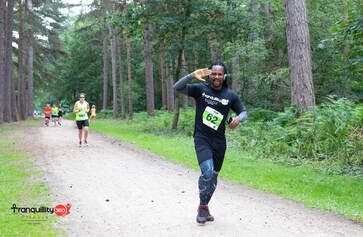 As a personal trainer you learn new things everyday on your journey, the main reason why you will see some personal trainer have a personal trainer. During my time training, I used to spend so much time doing weights, with very little cardio, well 15 minutes cardio. Back then I thought I was super fit, because I could easily do 3km in 15 minutes and feel great to do a full 2 hour lifting after that, one day a friend of mind invited me to run a 10km and I struggle badly could just about complete it in 57 minutes. So, decided I take deeper dig to see what the cause and I realised although I was fit I was locking endurance. Now what really is endurance? Good question am going to break down the entire process in this blog for you. Endurance is a term widely used in sport and can mean many different things to many different people. In sports, it refers to an athlete's ability to sustain prolonged exercise for minutes, hours, or even days. Endurance requires the circulatory and respiratory systems to supply energy to the working muscles to support sustained physical activity. When most people talk about endurance they are referring to aerobic endurance, which is often equated with cardiovascular fitness. Aerobic means "with oxygen" and during aerobic exercise, the body uses oxygen to help supply the energy needed for exercise. The objective of endurance training is to develop the energy production systems to meet the demands of activity for as long as they are required. How Foods Fuel Exercise The body converts food to fuel via several different energy pathways. In the simplest terms, the body can convert nutrients to energy with or without the presence of oxygen. These two energy systems are called:
Most often it's a combination of energy systems that supply the fuel needed for exercise, with the intensity and duration of the exercise determining which method gets used when. However, aerobic metabolism fuels most of the energy needed for long duration or endurance exercises. Athletes continually strive to push their capacity to exercise harder and longer and increase their endurance. The factors that limit sustained high-intensity efforts include fatigue and exhaustion. Sports training has been shown to modify and postpone the point at which this fatigue occurs. VO2 Max and Aerobic Endurance VO2 max or maximal oxygen uptake is one factor that can determine an athlete's capacity to perform sustained exercise and is linked to aerobic endurance. VO2 max refers to the maximum amount of oxygen that an individual can utilize during maximal or exhaustive exercise. It is measured as milliliters of oxygen used in one minute per kilogram of body weight. It is generally considered the best indicator of cardiorespiratory endurance and aerobic fitness. Elite endurance athletes typically have a high VO2 max. And some studies indicate that it is largely due to genetics, although training has been shown to increase VO2 max up to 20 percent. A major goal of most endurance training programs is to increase this number Muscle Fiber Type High-level endurance athletes often have a higher proportion of slow twitch (Type I) muscle fibers. These slow twitch fibers are more efficient at using oxygen (and aerobic metabolism) to generate more fuel (ATP) for continuous, extended muscle contractions over a long time. They fire more slowly than fast twitch fibers and can go for a long time before they fatigue. Therefore, slow twitch fibers are great at helping athletes run marathons and bicycle for hours. Adaptations to Endurance Training With endurance training, the body becomes better able to produce ATP through aerobic metabolism. The cardiorespiratory system and aerobic energy systems become more efficient at delivering oxygen to the working muscles and converting carbohydrate and fat to energy. Training Programs There are many ways to train for improved aerobic endurance. The duration, frequency, and intensity of each type of training vary and the training focuses on slightly different energy systems and skills and results in different physical adaptations. Some of the most well-known endurance training programs include:
1 Comment
11/11/2019 12:56:56 pm
Many people invest their time, money and effort to go to the fitness center to be fit. Some do it to achieve the body that they are aiming to have. Others do it to have a healthy and strong body. They even hire a personal trainer to guide them and to give the proper program that they will follow. Most of all they strictly eat the food that they need.
Reply
Leave a Reply. |
AuthorsThis blog is updated by Tranquillity 360 fitness personal trainers, as well as other guest bloggers. Archives
July 2021
Categories |

 RSS Feed
RSS Feed